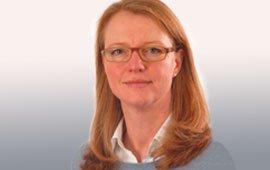The first German-language introduction to the research topic of gas hydrates comes from Judith Schicks, working group leader at the GFZ German Research Center for Geosciences and associate professor of thermodynamics and kinetics of multiphase systems at the University of Potsdam. Gas hydrates, often known as "burning ice," are ice-like solids composed of water and gas molecules that occur worldwide. They exist beneath the ocean, on all so-called continental slopes, and on land in permafrost regions. Naturally occurring gas hydrates are considered energy sources because natural gas can be extracted from them.
This book provides an introduction to the physicochemical principles of hydrate formation and the structures of the gas hydrate phases. Based on this fundamental understanding, it explains the occurrence of gas hydrates in nature and describes possible methods for extracting methane from hydrate-bearing sediments. However, it also highlights risks that could arise from gas hydrate occurrences in nature and introduces the possibilities of using these compounds in various industrial applications. These include, for example, the treatment of wastewater and the storage of gases. For example, it is technically possible to "trap" carbon dioxide in a molecular cage and store it as gas hydrate. However, research into this is still at an early stage.
New publication: Gas hydrates - An introduction to basic research and application
The book is recently published by Springer Nature: Link
About the author: Prof. Dr. Judith M. Schicks heads the Gas Hydrate Research Group at the GFZ German Research Centre for Geosciences in Potsdam. In 2013, she habilitated at the University of Potsdam in the scientific discipline of physical chemistry on the topic of gas hydrates and was appointed associate professor in January 2021.








![[Translate to English:] Torsten Sachs in front of a climate station on a field](/fileadmin/_processed_/3/9/csm__TorstenSachs_bearbeitet_GS_4a1365ef84.jpeg)

![[Translate to English:] left image flood at the Ahrtal: image from above, several houses are flooded; left image:: Heidi Kreibich;](/fileadmin/_processed_/4/4/csm_Bild2_9af0130e9f.png)



![[Translate to English:] Start der Vega Rakete](/fileadmin/_processed_/6/4/csm_20231201-kachel_Vega-VV23-launch_ESA-CNES-Arianespace_706716b68c.jpeg)









![[Translate to English:] Poster exhibition at the Brandenburg Hydrogen Day at the GFZ, some participants in the foreground](/fileadmin/_processed_/6/5/csm_Erster_Brandenburgischer_Wasserstofftag_GFZ_402fcec95e.jpeg)
![[Translate to English:] Group picture of the participants](/fileadmin/_processed_/9/4/csm_20231108_CAWa-Workshop-Tashkent_Gruppenbild_99ea779d8a.jpeg)

![[Translate to English:] [Translate to English:] Hörsaal](/fileadmin/_processed_/e/6/csm_H%C3%B6rsal_e21ac645fb.jpeg)


![[Translate to English:] The Delegations in the Historic Library on the Telegrafenberg. In the back there are from left to right, the Dutch Ambassador for Germany, Ronald van Roeden, the Dutch Minister for Education, Culture and Science, Robbert Dijkgraaf and the scientific director of the GFZ, Susanne Buiter.](/fileadmin/_processed_/d/b/csm_Kachel-2_9eba4b4212.jpeg)

